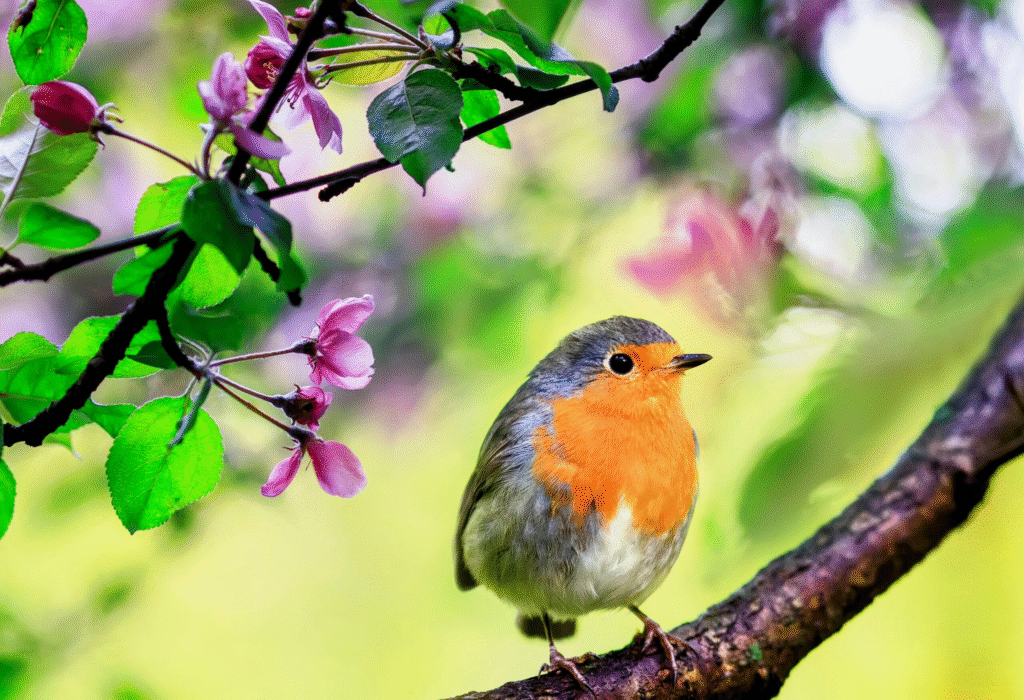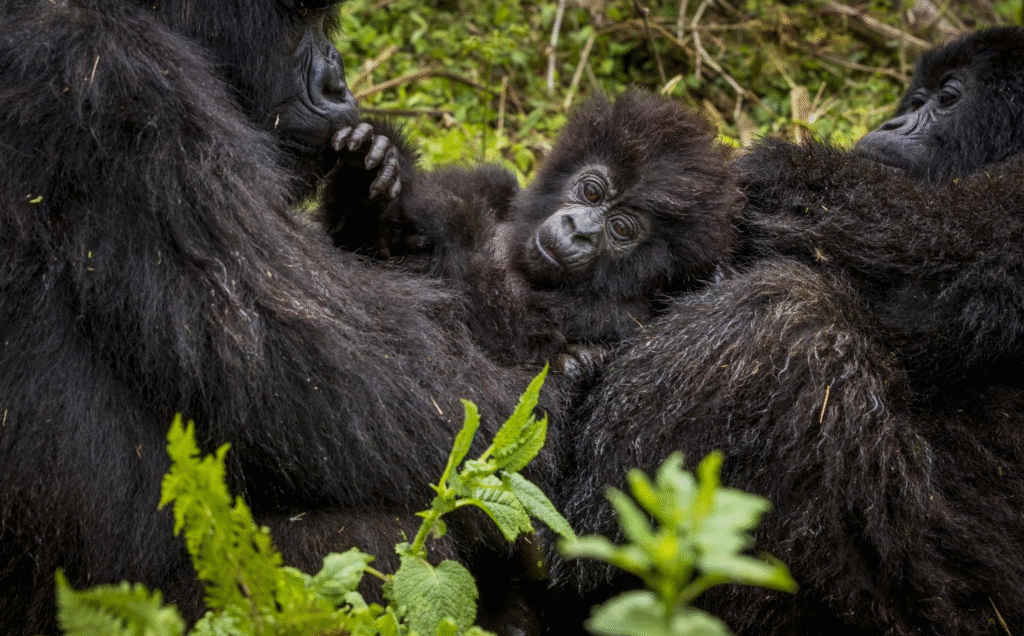Silent Forests: How We’re Losing the World’s Songbirds
Imagine that you´ve walked into a forest, it’s sunrise and you realize that you can’t hear anything – no morning chorus, no chirps or warbles on the wind. This is happening throughout the world. The lovely songbirds we all know and love and that used to fill forests, gardens, and parks with their presence, are disappearing and they are disappearing very quickly. Biologists have suggested that should this trend continue, we may see our forests become silent, and possibly even during our lifetime.
Songbirds are indeed beautiful and can fill a landscape or scene with color and song. However, songbirds are much more than that. They participate in key ecological functions as pollinators, pest control, and seed dispersers. The real tragedy is that like other animal taxa, songbirds are faced with anthropogenic pressures that are pushing them towards extinction. Therefore, it is essential to understand the reasons that songbirds are declining, what we can do to help stem their plight for the sake of this planet -and especially for the beautiful songbirds.
The Scale of the Decline

Recent research has found that North America alone has lost nearly 3 billion birds since 1970 and a large part of the decline is due to loss of songbirds. We see a similar situation in Europe with loss of farmland bird species due widespread agricultural practices and loss of habitat. In tropical regions — containing the highest diversity of songbirds — deforestation and climate change is rapidly destroying species that have existed in the same forests for thousands of years.
The loss is not just of rare or specialized birds, but also some of our more common species like the house sparrow and common nightingale have seen their numbers drop. The silence moving across our forests, fields, and public parks is an indication of the health of entire ecosystems.
Why Songbirds Are Disappearing

There is no single cause for the decline — rather, it is the result of multiple human-driven pressures.
Habitat Loss:Songbirds depend on a variety of habitats from dense tropical rainforests to open meadows. Deforestation, urbanization, and agricultural expansion are eliminating nesting sites and sources of food. Migratory species are the hardest hit as they are losing critical stopover locations during their long journeys.
Pesticide Use: Modern farming often relies on pesticides that kill the insects songbirds eat. Without adequate food, birds cannot maintain energy for migration, breeding, or even daily survival. Certain chemicals also poison the birds directly.
Climate Change: Changes in weather patterns alter migration timing, disrupt breeding cycles, and shift the distribution of insects and vegetation. If birds are unable to adapt, they could face starvation or a failed nesting season.
Collisions and Light Pollution: Millions of songbirds die each year after colliding with buildings, windows, and communication towers. Light pollution disorients nocturnal migrants, causing them to stray off course and exhaust themselves.
Hunting and Trapping: In some parts of the world, songbirds are hunted for food, sport, or the pet trade. Even small-scale trapping can devastate local populations, especially for species with slow breeding rates.
Why Their Disappearance Matters

The extinction of songbirds is more than just a visual shame; it is an ecological disaster. Several species are helpful in controlling its natural pest, including insects that could destroy agricultural crops and forests, others assist in pollinating plants and further distributing seed or regenerating trees, shrubs, etc.
Without songbirds, insect populations could boomed, plant diversity could diminish; regeneration of forests could grind to a halt, and so on. The bottom line is that songbird loss deteriorates the resilience of ecosystems — making them more susceptible to disease, invasive species, and climate changes.
Species on the Brink

While hundreds of songbirds are in decline, some are alarmingly close to extinction.
Cerulean Warbler: This small, sky-blue bird has lost over 70% of its population due to deforestation in both its North American breeding grounds and South American wintering habitats.
Yellow-breasted Bunting: Once so common it was called the “rice bird,” this species has suffered catastrophic declines due to illegal hunting in Asia. It is now classified as Critically Endangered.
Regent Honeyeater: Native to Australia, this bird’s numbers have dropped so low that young males sometimes fail to learn their species’ songs, threatening reproduction.
Forest Thrush: Found in the Caribbean, the forest thrush faces threats from habitat destruction, hurricanes intensified by climate change, and invasive predators.
Signs of Hope

While the situation is serious, there is evidence that conservation can and does work.
The recovery of the Eastern Bluebird in North America shows what can happen when the community joins together to provide nesting boxes and reduce pesticide use. The European population of the red kite has rebounded due to legal protections and habitat management.
In tropical developing countries, eco-tourism projects have contributed funds to maintain forests, which helps songbirds and provides employment for local communities. Conservation groups are also developing large-scale reforestation programs to restore critical habitats.
What We Can Do
Saving songbirds requires action at every level — from global policy to individual choices.
Support Bird-friendly Agriculture: Choosing products like shade-grown coffee and organic produce helps maintain habitats and reduce pesticide use. Shade-grown coffee plantations, for example, provide vital stopover habitat for migrating birds.
Make Windows Safer: Using bird-safe glass or applying decals to large windows can prevent fatal collisions.
Plant Native Vegetation: Native plants attract insects and provide food and shelter for local bird species. Urban gardens and green spaces can become important refuges.
Reduce Light Pollution: Turning off unnecessary lights during migration seasons can save countless birds from becoming disoriented.
Participate in Citizen Science: Bird counts and migration tracking programs give scientists valuable data on population trends and migration patterns.
Advocate for Conservation Laws: Strong legal protections for habitats, bans on harmful pesticides, and climate action policies are crucial to long-term success.
The Cost of Inaction
If current trends continue, the children of this generation may have to inherit forests without the songs which have inspired poets, musicians and artists for centuries. The ecological implications of a loss of songbirds would affect us all in more ways than simply losing beauty, with ecosystems greatly affected that contribute to clean air, clean drinking water and food.
The silence we hear in forests should already be a wake-up call — and we cannot afford to wait. Act now, and we have a chance to act in the right direction to bring back the decline of songbirds, so the morning chorus will have continuity as a soundtrack to our world.
A Future Worth Fighting For
The struggle to safeguard songbirds is about more than just birds. It’s about the health of our planet, the balance of our ecosystems, and a human thing too — our connection to the wild world. Every warble, trill and whistle reminds us that nature is alive and well. To lose that music would leave a huge hole in our world.
No matter if you live in a city apartment or on a farm in a rural setting, there are actions you can take to help make the situation better. Simple actions led by millions of people can lead to meaningful change. We can work together to ensure our forests — and our mornings — are still filled with song.







